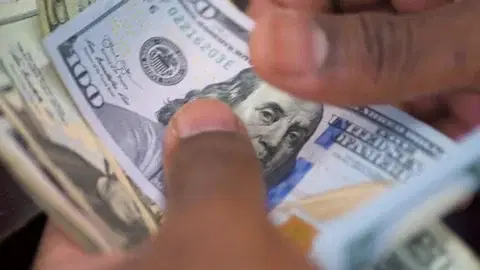The naira held steady around ₦1,459 per dollar at the official foreign exchange window on Sunday, October 26, 2025, while street and cash market rates stayed significantly higher as demand for U.S. dollars continued to outweigh supply.
Key Rates
Official (NFEM) rate: ₦1,458.8 / $1
CBN indicative range: Mid-₦1,450s to ₦1,460s
Parallel market (street) rate: ₦1,495–₦1,515 / $1, depending on location and dealer
According to market data and FX monitoring platforms, the Nigerian Foreign Exchange Market (NFEM) — a volume-weighted benchmark used by banks and corporates — closed around the low ₦1,460s on Sunday.
However, in the parallel market, where cash transactions dominate, rates remained notably higher. Most street dealers quoted between ₦1,480 and ₦1,515 per dollar, with Lagos traders reporting an average selling price of about ₦1,495. The persistent gap between the official and black-market rates highlights ongoing foreign exchange shortages at the retail level.
What’s Driving the Market
Traders say the naira’s current performance reflects a combination of factors, including changes in CBN liquidity operations, portfolio inflows, and seasonal demand for imports and remittances. Market data providers, including Reuters, also showed the naira trading near ₦1,458.78 during intraday sessions on Sunday, though with mild fluctuations.
Read Also;
Dollar to Naira exchange rate today, October 25, 2025
What It Means for Nigerians
Importers and large firms using official trading channels (like the NFEM or NAFEX) are likely to transact close to the official rate in the ₦1,460 range.
Individuals and small businesses sourcing dollars for travel, imports, or remittances on the street will continue to pay closer to ₦1,500 per dollar.
Outlook
Analysts say narrowing the gap between official and parallel rates will depend on improved dollar inflows into the formal market, sustained CBN interventions, and investor confidence. The central bank’s earlier interest rate adjustments and liquidity management efforts are still being watched closely as potential stabilising measures for the naira.




